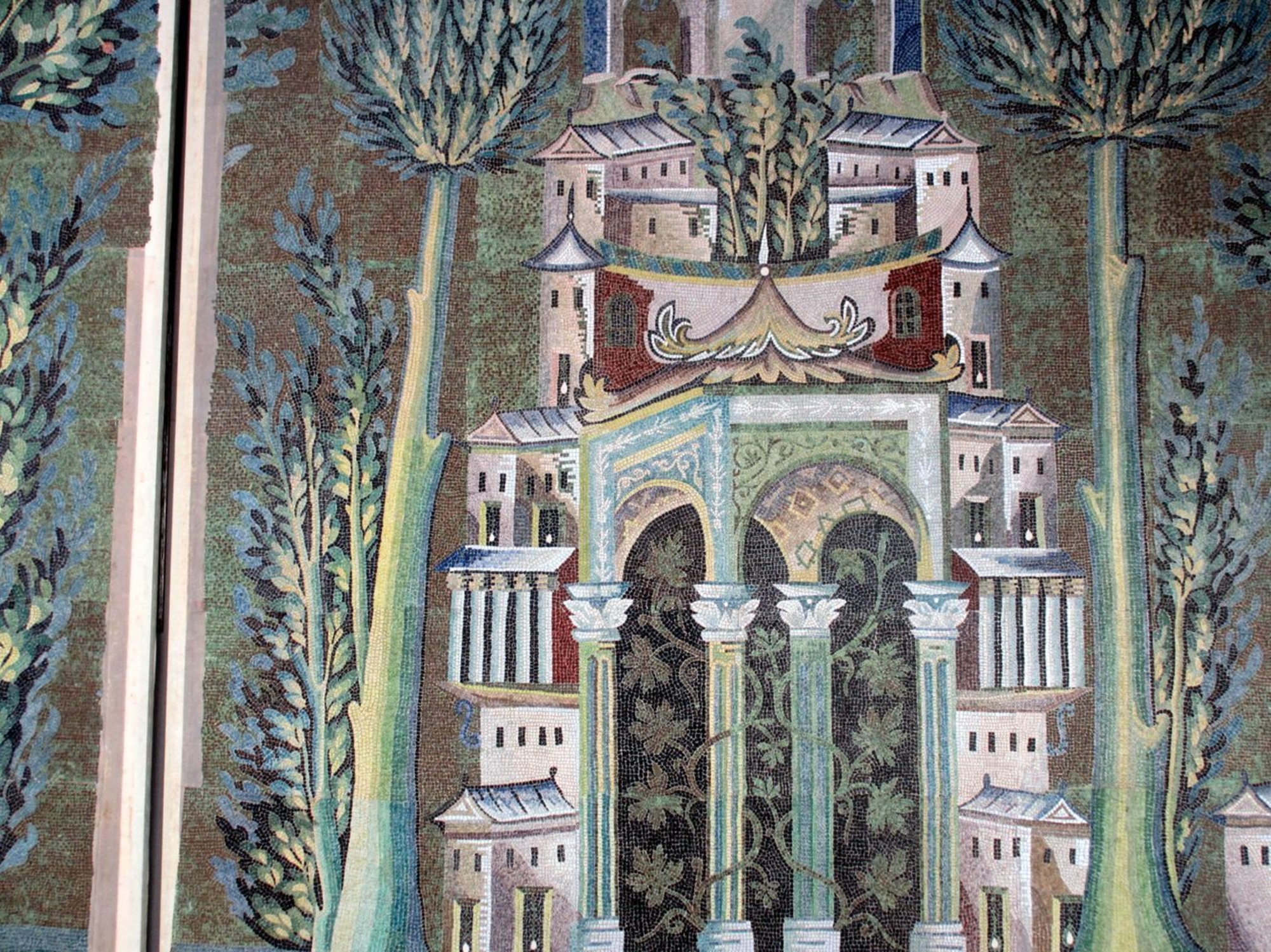
- Home
- The mosaic decoration
- Precious marbles and gold-ground mosaics
A wonder of the Islamic world
Caliph al-Walid I wanted a dazzling mosque for the capital of the Umayyad dynasty. According to the medieval historiography, colossal sums were spent on its construction. The marble and mosaic decoration reflected the prestige of the caliph and his dynasty.
The great Umayyad mosque is invariably listed as one of the "wonders of the world" in medieval and Early Modern travelogues and treatises on geography. Some even mention it twice: once for its architecture, and again for its decoration.
A decoration of Byzantine inspiration
The walls were faced with finely veined marble to the height of a man’s head. The upper sections were covered with glass mosaics including a wealth of gold tesserae. The combination of marble and mosaic is typical of the Hagia Sophia in Constantinople, the Basilica of San Vitale in Ravenna, and other great 6th century Byzantine religious buildings.
The richness of Umayyad architecture
The same type of decoration appears in the Dome of the Rock in Jerusalem, completed some years earlier (691). Archaeological excavations of "desert castles", 8th century aristocratic residences built on the steppes of Syria and Jordan, attest to the combination of marble and mosaic to decorate prestigious spaces, such as reception halls.
The Umayyad caliphs appear to have commissioned mosaic decorations for other important buildings which they renovated or built. The scholar al-Samhudi (1466-1533), citing now-lost ancient sources, states that the mosque at Medina was also decorated with mosaics during the Umayyad period.
